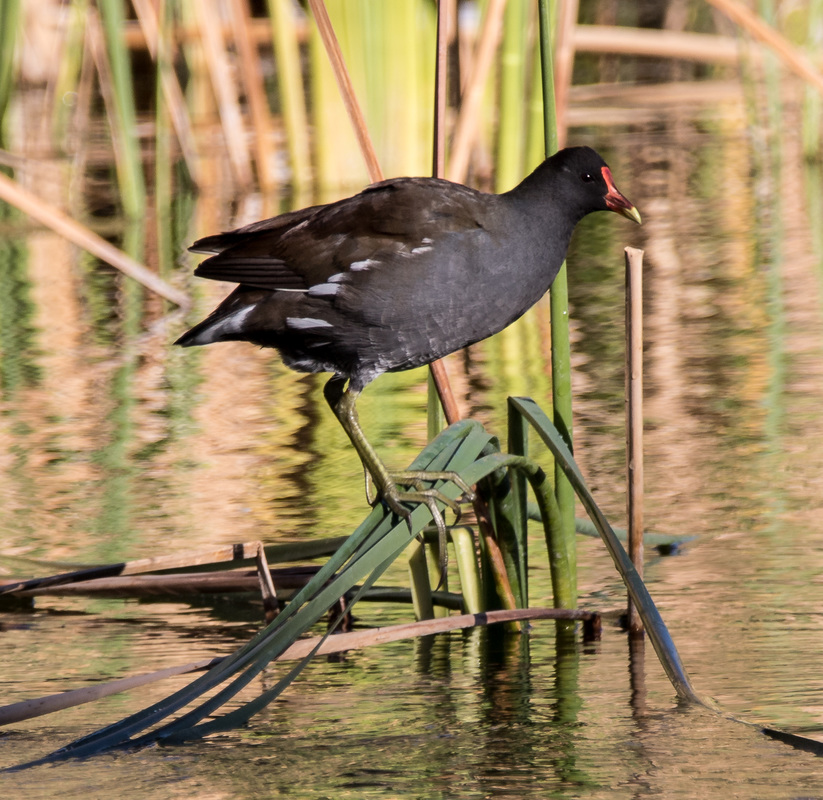|
I returned to Agua Caliente Park this fall for Wake Up with the Birds on Thursday mornings. For details, see prior postings from May of this year. The bird walks are led by Jeff Babson, Environmental Education Program Specialist for Pima County Natural Resources Parks and Recreation. Jeff is a fantastic teacher, and each walk with him is full of information and insights into the birds we spot, including their evolution, diet, habits, and migratory behavior, all done with a sense of humor. For Jeff's bio, see this link. Note that beginning in November these Thursday morning walks begin at 8:30 am, Agua Caliente Park, 12325 East Roger Road, east of Soldier Trail. Although we spot many birds on the walks, I am a photographer, so what I bring home are images, and the best (or at least the acceptable!) get posted here. October 20th: We spotted the Common Gallinule, formerly knows as the Common Moorhen. It inhabits marshes and ponds, displaying a bright red shield over the bill and using its long toes to walk along marsh grasses. For more information see the Cornell Ornithology site, and for some really great photos, see Tom Grey's website. The images below show the out-of-the-water-on-the-reeds behavior, and show off the birds features. October 27th: We spotted a female Gadwall, a dabbling duck that tips forward to feed on submerged vegetation without diving. They often stay in pairs, although on this day we only saw a female. Two images below. Note that Tom Grey has great photos on his website, males and females, captured at Shoreline Park, in Mountain View, California. November 3rd: A very windy day in Tucson, including Agua Caliente. I almost stayed home, but was glad I joined Jeff and the group at the new start time for November, 8:30 am. Birds were out, often in trees, and the wind seems to fluff them up, creating more texture. There is a large leafy tree almost in front of the Audubon Store, which I am embarrassed to admit, I cannot identify. Will put on my "to do" list. In the tree was a male Vermilion Flycatcher, who stayed put (maybe because of the wind) and posed for us. I have photographed Vermilion Flycatchers whenever I see them, and often the male is high on a branch (far away) in bright sunlight. The brilliant red of the head and breast seems to blow out the chip at the high end, with the shadows, well, in the shadows. I seem to lose detail at both ends, and the reds look like they are bleeding. However, in this case the bird was in filtered light, not too different from studio lighting. The sun was behind me, and fortunately there was enough morning light coming directly on the bird to create the much-sought-after eye reflection. Canon EOS 7D Mark II, Sigma 150-600mm C series at 484 mm, f 8.0, 1/320 sec, ISO 400, handheld with help of a Stedi-Stock. More images below. Later in the morning we spotted a Blue-gray Gnatcatcher in bushes close to one of the washes. And not too far away, a Yellow-rumped warbler. That's it for now! Stay tuned - more to come from Southern Arizona as fall gives way to winter.
2 Comments
|
AuthorHenry Johnson, photographer and author of this site. For more detail, see About
Categories
All
Archives
April 2024
|













 RSS Feed
RSS Feed